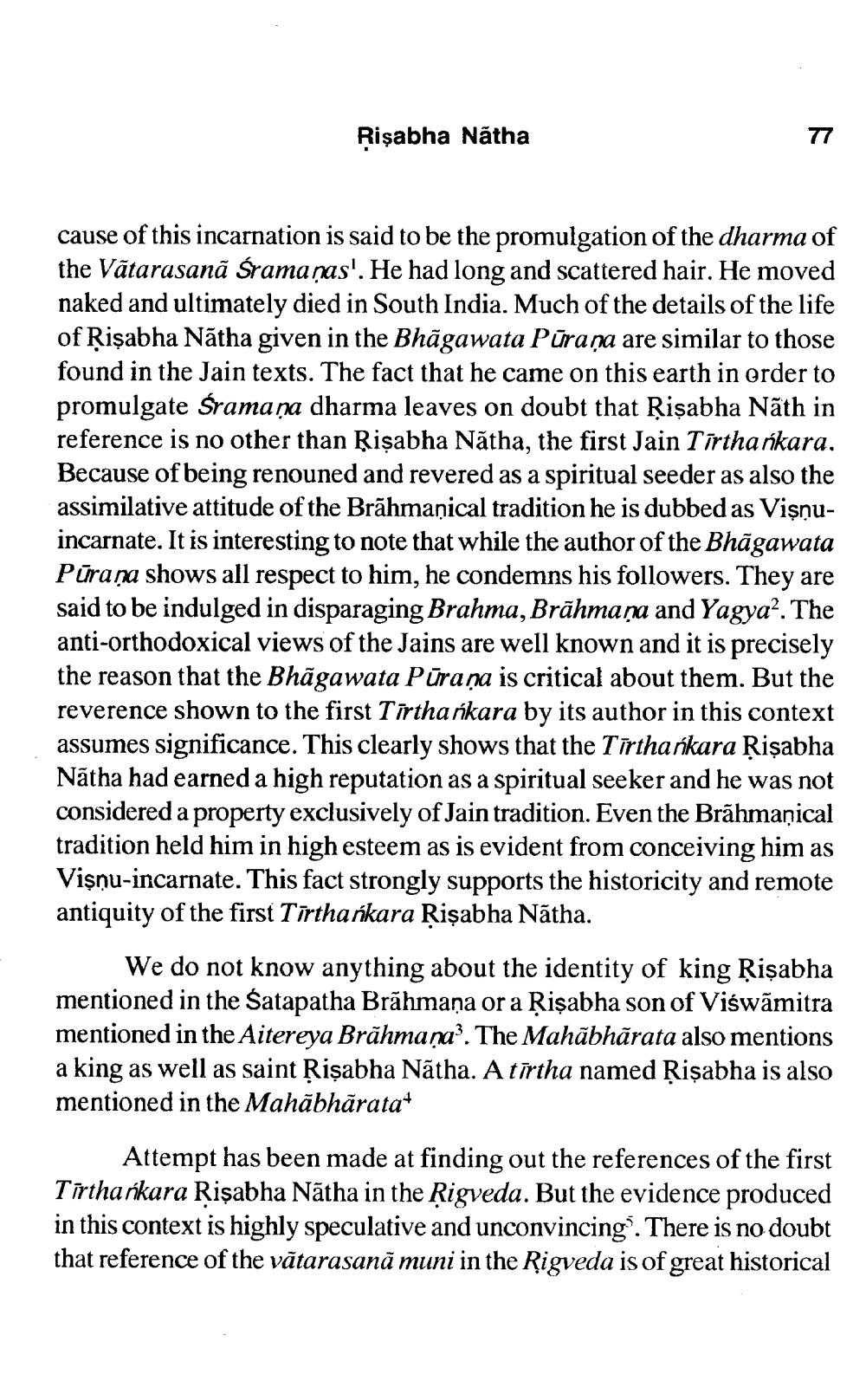________________
Risabha Natha
77
cause of this incarnation is said to be the promulgation of the dharma of the Vatarasana Śramaņas'. He had long and scattered hair. He moved naked and ultimately died in South India. Much of the details of the life of Risabha Natha given in the Bhagawata Pūraṇa are similar to those found in the Jain texts. The fact that he came on this earth in order to promulgate Śramaņa dharma leaves on doubt that Ṛiṣabha Nath in reference is no other than Risabha Nãtha, the first Jain Tirthankara. Because of being renouned and revered as a spiritual seeder as also the assimilative attitude of the Brāhmaṇical tradition he is dubbed as Vişnuincarnate. It is interesting to note that while the author of the Bhagawata Pūraṇa shows all respect to him, he condemns his followers. They are said to be indulged in disparaging Brahma, Brāhmaṇa and Yagya2. The anti-orthodoxical views of the Jains are well known and it is precisely the reason that the Bhagawata Pūraṇa is critical about them. But the reverence shown to the first Tirthankara by its author in this context assumes significance. This clearly shows that the Tīrthankara Ṛiṣabha Nätha had earned a high reputation as a spiritual seeker and he was not considered a property exclusively of Jain tradition. Even the Brahmaṇical tradition held him in high esteem as is evident from conceiving him as Vişņu-incarnate. This fact strongly supports the historicity and remote antiquity of the first Tīrthankara Ṛiṣabha Natha.
We do not know anything about the identity of king Risabha mentioned in the Satapatha Brahmaṇa or a Risabha son of Viswamitra mentioned in the Aitereya Brāhmaṇa3. The Mahābhārata also mentions a king as well as saint Risabha Natha. A tīrtha named Risabha is also mentioned in the Mahabharata+
Attempt has been made at finding out the references of the first Tirthankara Risabha Natha in the Rigveda. But the evidence produced in this context is highly speculative and unconvincing. There is no doubt that reference of the vatarasana muni in the Rigveda is of great historical




